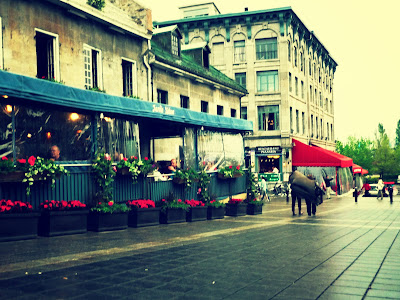Darktable vs Lightroom: Are we missing out?
A few months ago, I posted a tutorial on photographing the Milky way, from planning to editing. In the tutorial, I showed the steps required for editing the photograph in Darktable. What I did not mention was that it took me almost 30–45 minutes to do all the editing in Darktable, trying to figure out the optimal adjustments to achieve the effect that I wanted. At the end of the process, I was quite pleased with the editing, though I felt that I should have done more while capturing the image. Maybe try an exposure with a wider lens with a larger aperture, get in more light in the image. Well, that would cost me quite some money, for a hobby that I only occasionally pursue. On a whim, I downloaded Lightroom for Android from the Play Store, copied over the camera DNG to my phone’s SD card, and started to play around with the image a bit.
Within a couple of minutes, just before going to bed, I had created, on my phone, an image that was more beautiful than the image I had spent close to three quarters of an hour on a computer. The results blew me away. You can see the difference between the Darktable and Lightroom versions below.


To be fair in my comparison, I went back to Darktable, and used the adjustments that worked in Lightroom and made the exact same adjustments in Darktable, as best as I could. Even so, the image generated by Darktable is definitely desaturated (in the sky and the Milky Way, even with the saturation and vibrance sliders moved way up), and splotchy (on the ground and along the observatory wall), whereas Lightroom has made a lot of smoothing adjustments automatically under the hood to get me a pleasing image that is closer to what I wanted. Moreover, although the white balance numbers are identical in both software, the version is Lightroom shows colours other than blue.


So, I ended up trying out the Adobe CC Photography suite, and I loved it. Now, I would not go so far as to say that Darktable is not a good raw processing software, in fact, it is great! However, I found that with Lightroom, I could save just a few more “bad” images, and this was important. When I say bad images, I mean images that were incorrectly exposed or blurry. Adobe has put in quite a lot of effort into great algorithms that produce pleasing pictures, although it is equally easy to go into territory where one’s images are a nausea-inducing vomit of rainbow colours.
I’m amazed by how good Darktable is, considering that it is a voluntary effort run by a handful of developers. The layout, the UI, the different modules, they are almost exact clones of Lightroom. Where Darktable differs is in applying multiple modules to specific parts of the image using masks. In Lightroom, one can paint over an area, then apply a number of adjustments, such as exposure, clarity, white-balance, etc. While I can technically achieve the same effect in Darktable using mask groups, Adobe’s approach is a lot more user friendly, and a lot more intuitive. Moreover, Lightroom allows me to preview the adjustments as I’m making them, unlike Darktable, where the drawing phase is separate from the adjustment phase.
So, are we missing out by using free and open source applications like Darktable over applications such as Adobe Lightroom? For the most part, I’d say no. I spent some time playing with some of my favourite images in Lightroom, and I could not tell which one was processed with Lightroom and which one was processed with Darktable when the images were exposed correctly in camera. On the other hand, for images that were incorrectly exposed, or could not be exposed properly due to some limitations of my camera and lens, Lightroom saved the day.
What does this mean for me? Well, I have bought a subscription for Adobe CC. Would I have bought the subscription if I was still in India? Probably not – the subscription is too expensive for an Indian income. However, in the US, it is the cost of one lunch for one month, and I’m happy with the product I get in return. At the same time, thanks to Microsoft’s Windows Subsystem for Linux (WSL), I am now spending most of my time programming on a Windows machine, so I don’t have to search for Linux-specific software any longer. As an aside, Darktable works wonderfully with WSL and XMing, in case you are a Windows user who wants to try Darktable.


Comments
Post a Comment